
Roy Lichtenstein’s Pop Art diptych painting Whaam! would not be as powerful without the giant yellow lettering spread over a large part of its canvas depicting the sound effect of a missile hitting a target and a plane blowing up. What the image cannot convey, the word ‘Whaam!’ signifies. There it is in stark bold letters—a brilliant sound effect open to a million academic interpretations.
In the 1960s, the much-loved Batman TV series interjected fight scenes with wonderful descriptive graphics of the various sound effects: “Ka-Pow!” “Smash!” “Aiiieee!” “Awk!” “BAM!”. These colorful images added greatly to the excitement of watching Batman (Adam West) and Robin (Burt Ward) defeat the Joker, the Riddler, Catwoman, the Penguin and all their other arch nemeses.
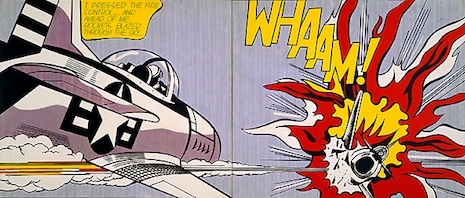
Roy Lichtenstein’s ‘Whaam!’ (1963).
Comic books, of course, have always had panels filled with such wonderfully onomatopoeic words that greatly add to the reader’s enjoyment. Away from the usual superheroes and action comics, artist Dan DeCarlo and Archie Comics brought a whole new level to the power of graphic book sound effects. DeCarlo has been described as:
...a master at framing a scene, clearly portraying the action, and conveying the appropriate emotions of the characters…. not as easy a task as you might think.
The figures in his frames are active—they are dynamic and appear to be moving and responding to the action around them. Add to this the incredible sound effects in every frame, then Betty, Veronica and their pals are suddenly in a work of surreal mini Pop Art.
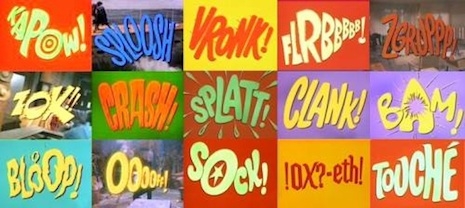
A collection of ‘Batman’ graphic SFX.
However, it should be noted that it was the writer who usually picked the words to represent the various SFX and then the letterer who then placed them within the panel—as comic book writer and editor Paul Castiliglia explains:
....most of the sound effects are first indicated by the writer in the script, and then are added in to the art by the letterer after the pencil artist has drawn the figures in each panel. The pencil artist may write in sound effects (in plain text) to indicate their location in each panel but most of the time it is the letterer who determines the shape and lettering style for the sound effects and who actually renders them, inking the outlines.
Archie has employed many letterers over the years. It is highly likely that the majority of the panels you posted were lettered by Bill Yoshida; some may have been lettered by Archie’s long-time editor Victor Gorelick as well.
These written SFX often become the focus of our attention—creating a dynamism mere illustration alone could not provide. This is a little something I find quite fascinating—how did these writers come up with say “Smeerp!” to represent a kiss? Or “Sceeeee!” to depict something untoward just out of frame? Do people actually say “Awk!” when scared? Do we say “Aaaiiiiieeee!” when fleeing in terror? In fact, is there a thesaurus of these wondrous words? And if so, where can I get a copy?
This selection of Dan DeCarlo’s artwork with lettering by (most likely) Bill Yoshida and Victor Gorelick for Archie Comics are a superb example of the surreal joy of comic book SFX.

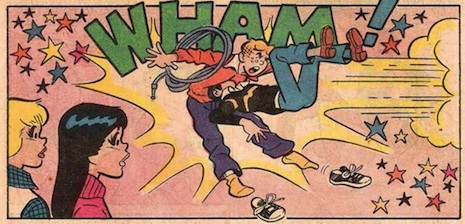

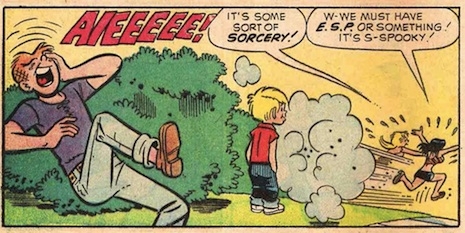

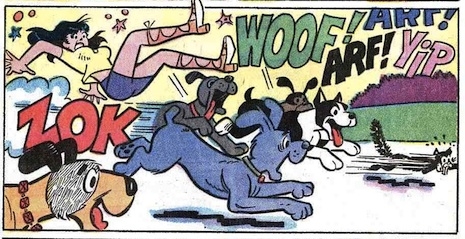

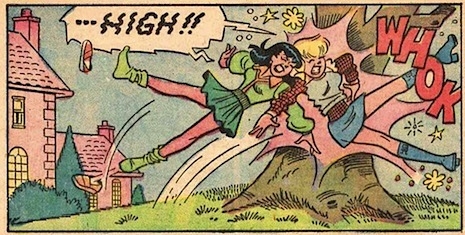
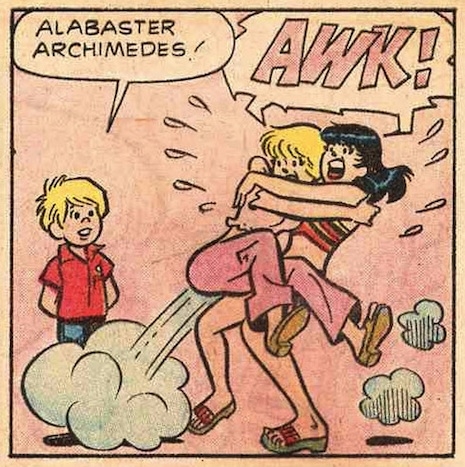

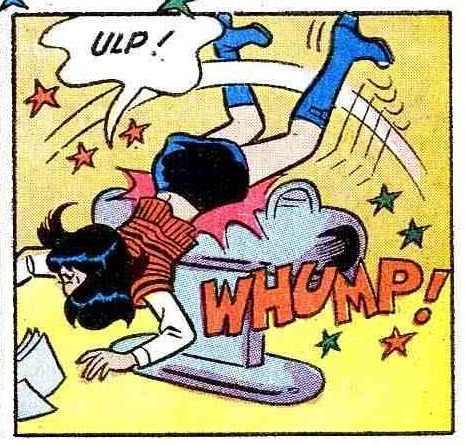





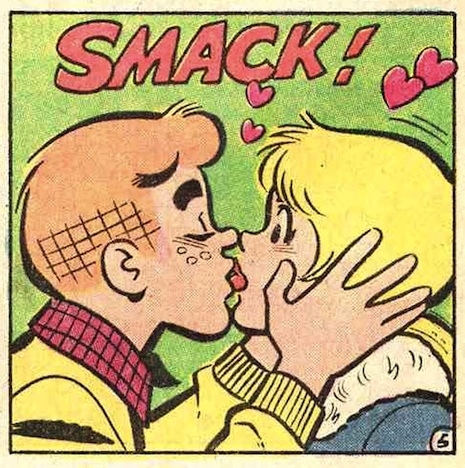
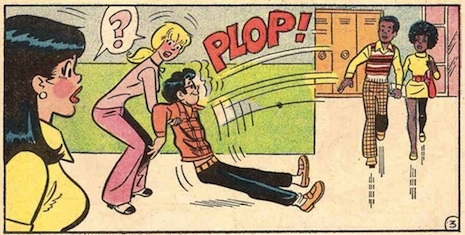
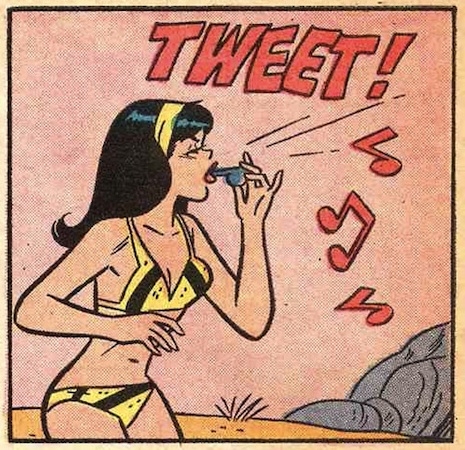

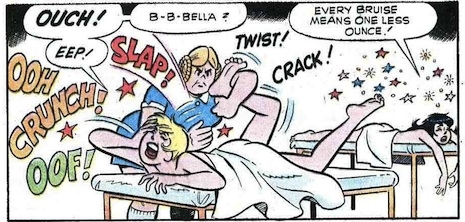
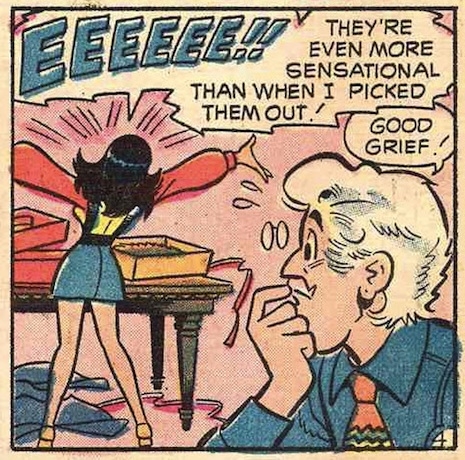
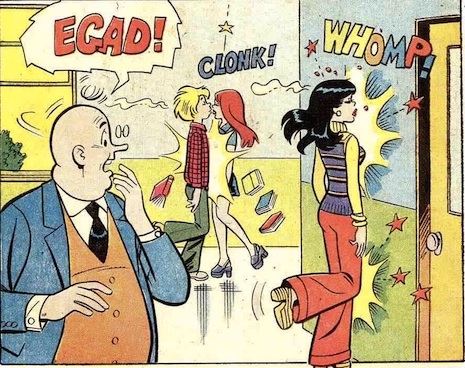
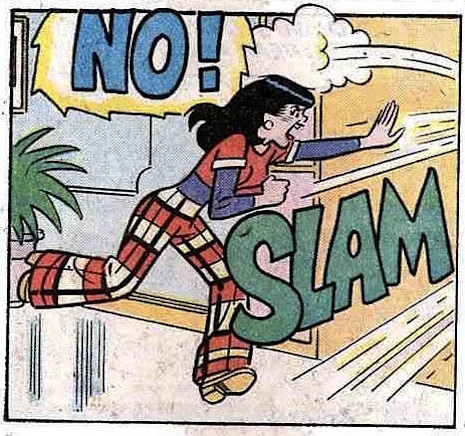

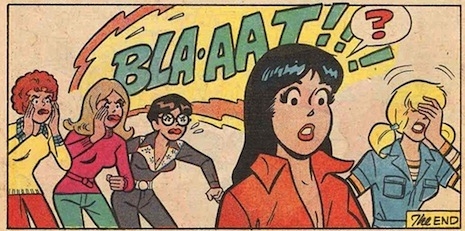
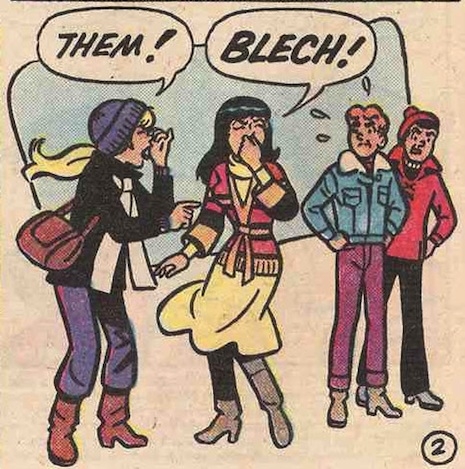
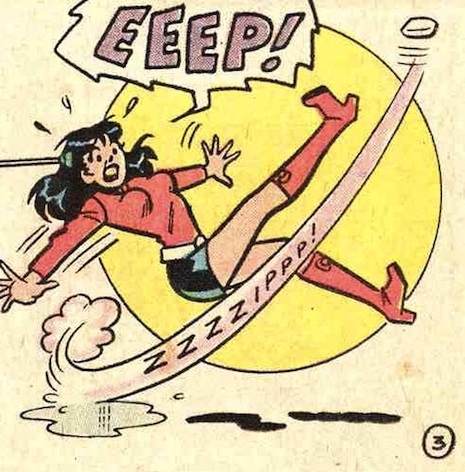
Via Flashbak.